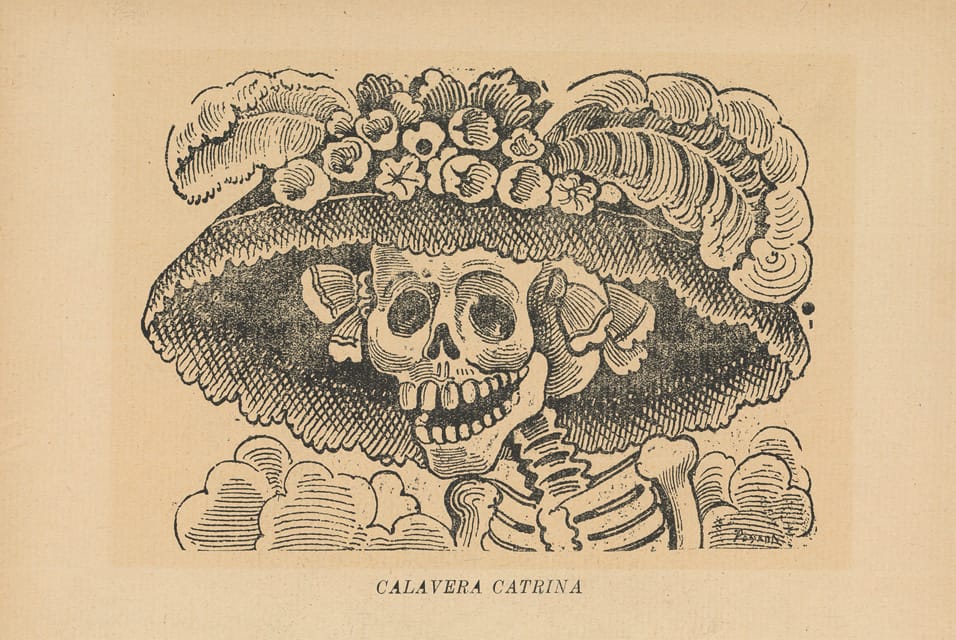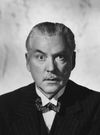Death isn't all He's cracked up to be

Or should I say She? My favorite Death character in literature is Ninon de Lenclos' Noctambule where, if Ninon doesn't cheat Death exactly, she does delay him and deny him her immortal soul. She lived to be 84. Similarly, in movies it's Ingmar Bergman's The Seventh Seal (above), despite its existential bitterness. It seems clear to me that this bitterness and resentment - toward an absent God? - is what my parents were experiencing in their last hours.
In art, though, it is hard to surpass Adolph Von Menzel's humble character below. Death should be respected but not feared? Is one of his shoes coming off?
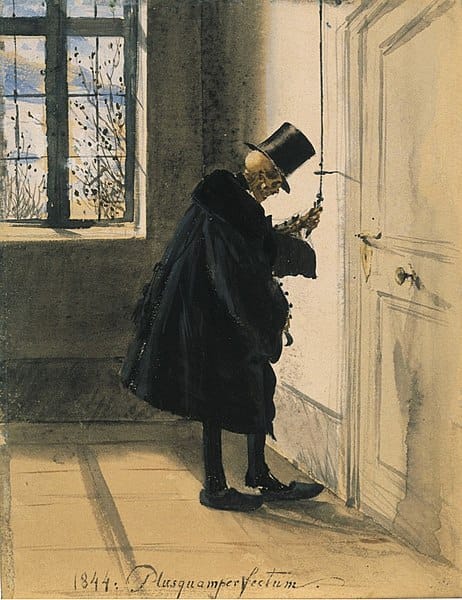
And, as if to say that Death may not be final this time, or ever, Von Menzel followed up the painting with another (below), where Death is booted out the window amid a hail of wine bottles. Von Menzel lived to be 89.
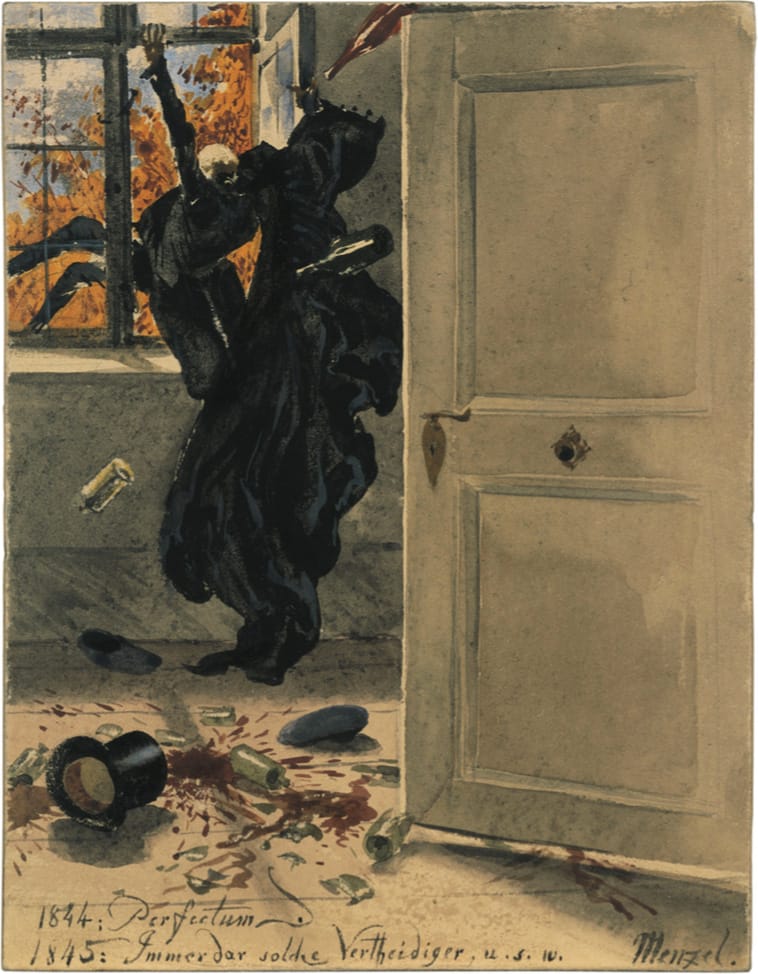
German painters often took a humorous approach like this. Here is Max Klinger's painting of Death peeing, in 1880.
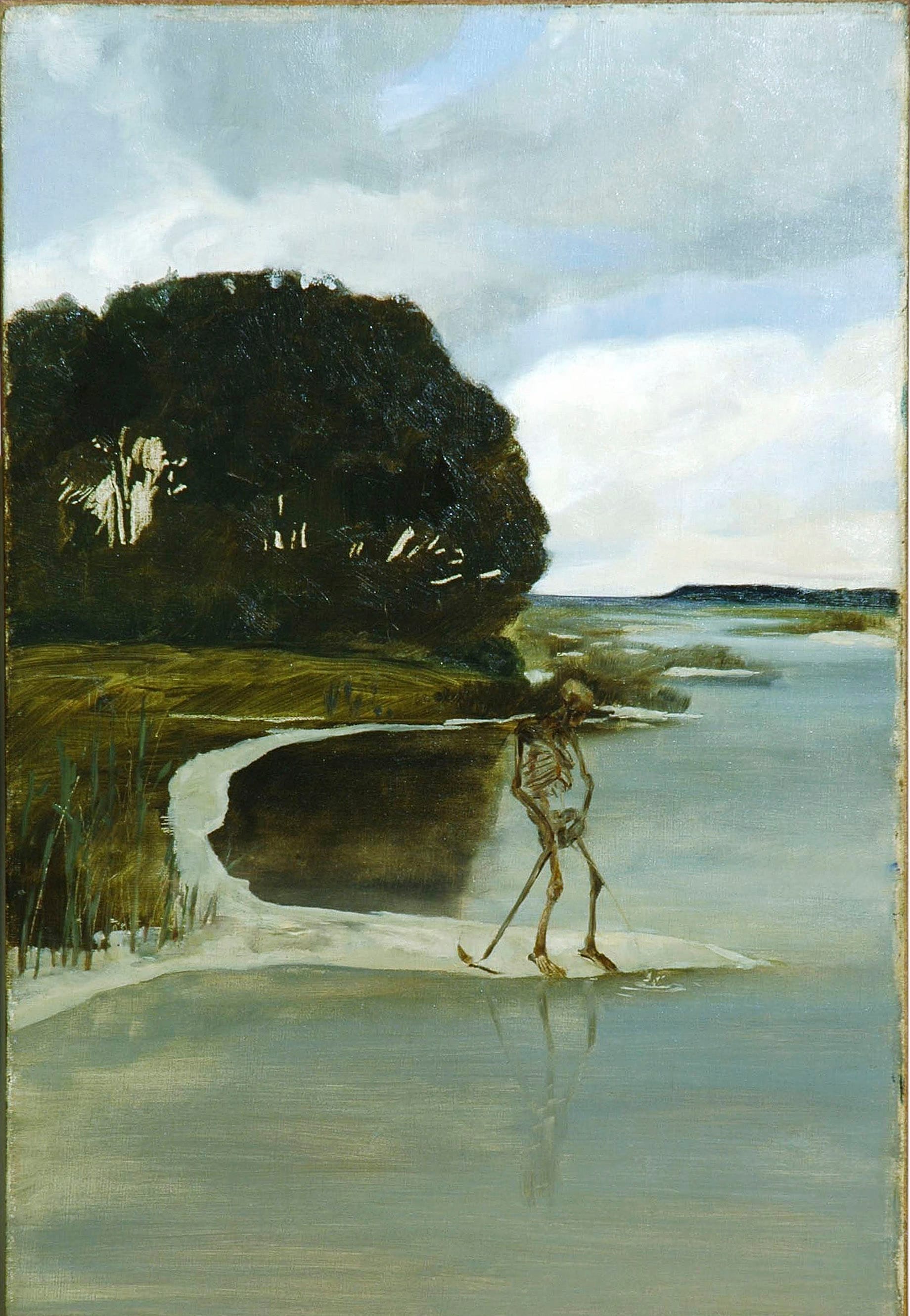
Hungarian and Jewish painter Adolf Hirémy-Hirschl also has some humor going on here, as Ahasuerus (The Wandering Jew) navigates between an angel of Life and a skeletal Death, perhaps on his way to the beautiful woman in the foreground? Never give up? By the time of Klimt and Schiele, there is less humor; World War I was around the corner.
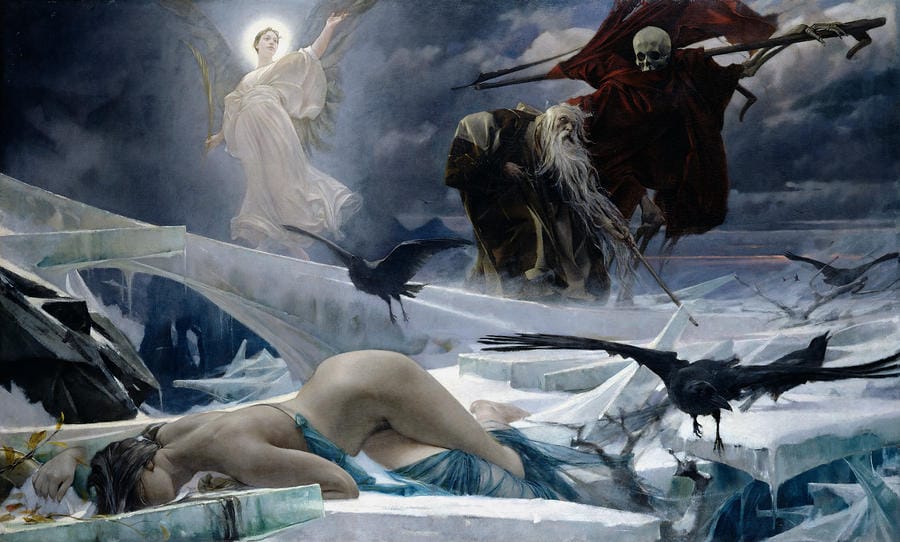
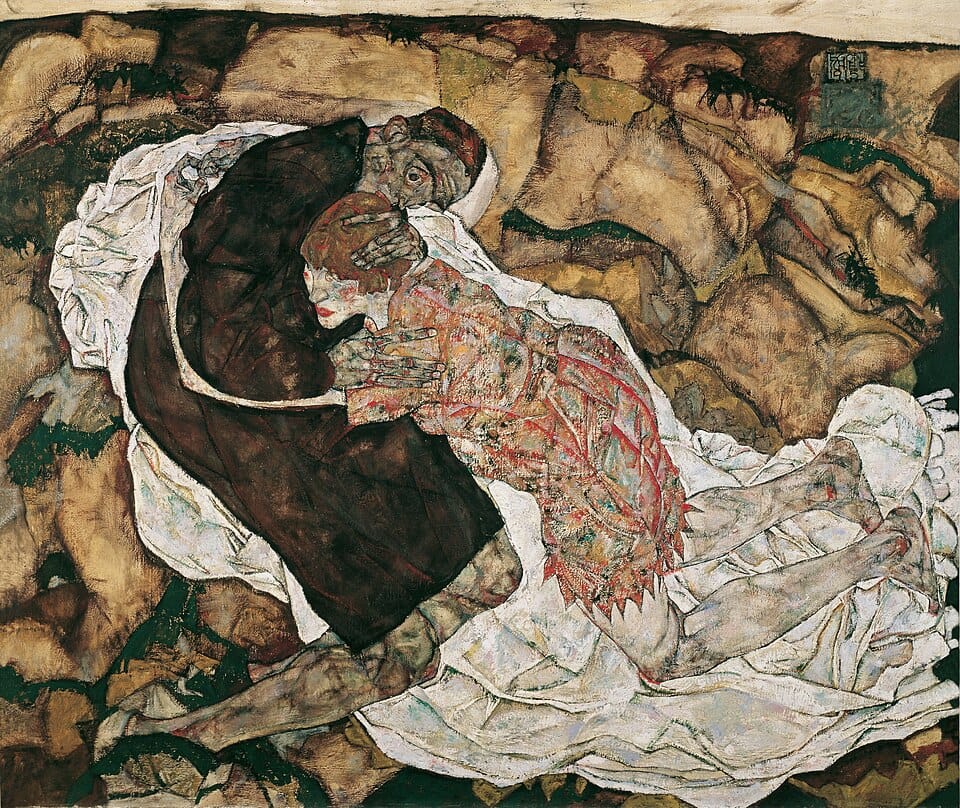
Looking back to the medieval period and the Renaissance, painters took more moralizing approaches, like Hieronymus Bosch's Death and the Miser (aka Death and the Usurer) - a common religious theme at the time. Below is a detail from a panel in The Pilgrimage of Life Triptych, which is a masterpiece and worth viewing as a whole. It must have been stolen at some point from 's-Hertogenbosch and taken from the Netherlands, because now it's in the U.S.
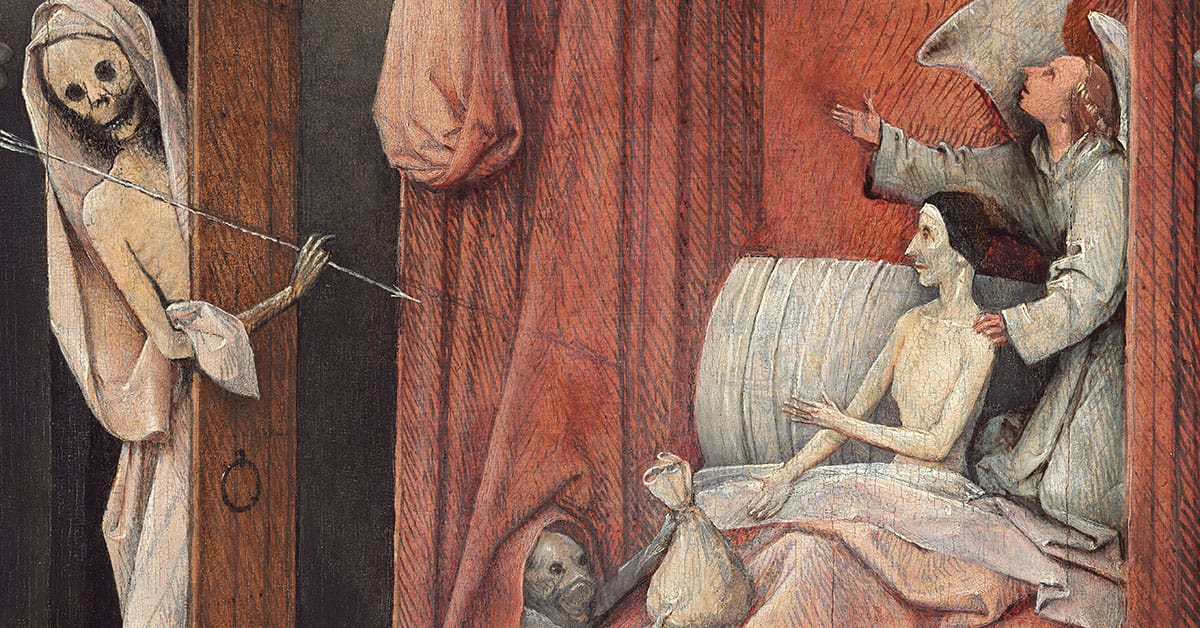
Hans Holbein the Younger produced an amazing set of woodblocks called The Danse of Death in the 1520's, while he was in his twenties and based in Basel. This one is "The Nobleman" - with Holbein's distinctive sense of humor. He had recently finished illustrating Martin Luther’s groundbreaking translation of the New Testament into German.

German painter Sebald Beham produced a variety of striking miniature woodcuts of Death claiming his own, like this one below of a demonic angel of death, from around 1547, when he was living in Frankfurt. Such images were very popular with collectors.
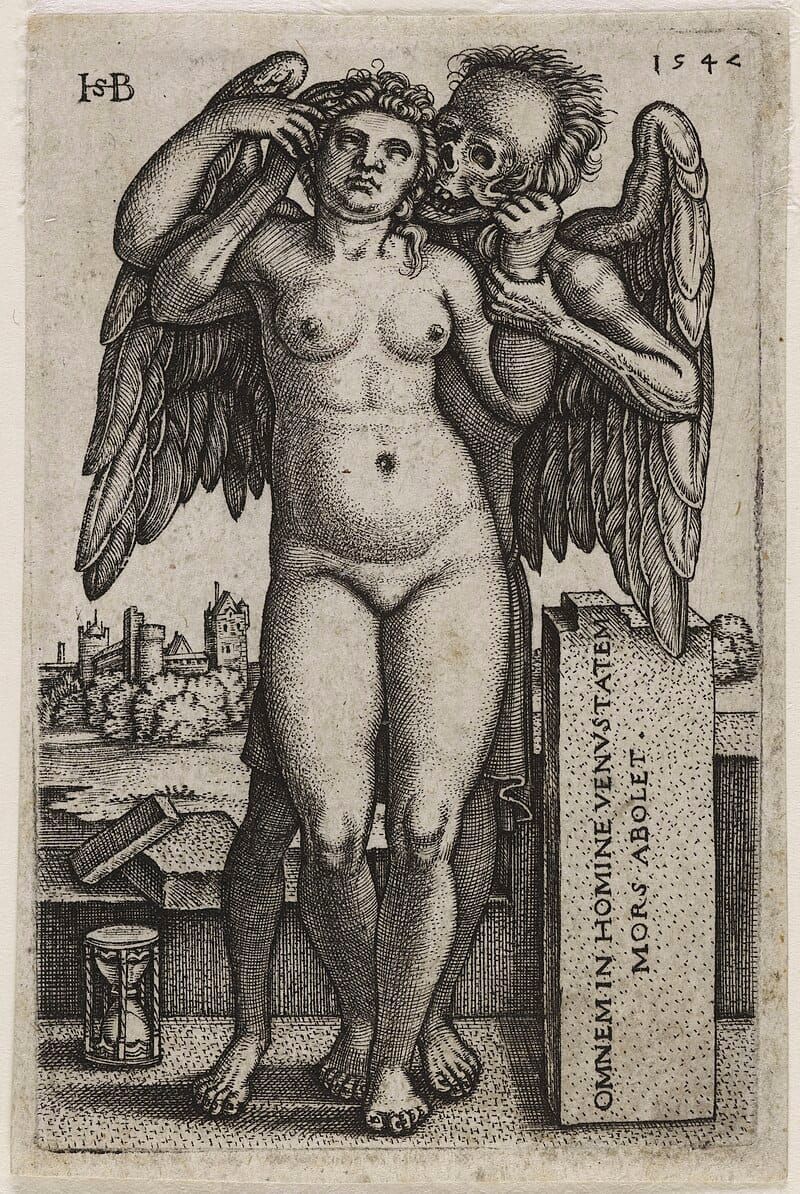
Below is Death archer by Georg Petel (circa 1630). He was a German sculptor and ivory carver in the Baroque era, based in Augsburg, where he probably died of the plague at age 34.
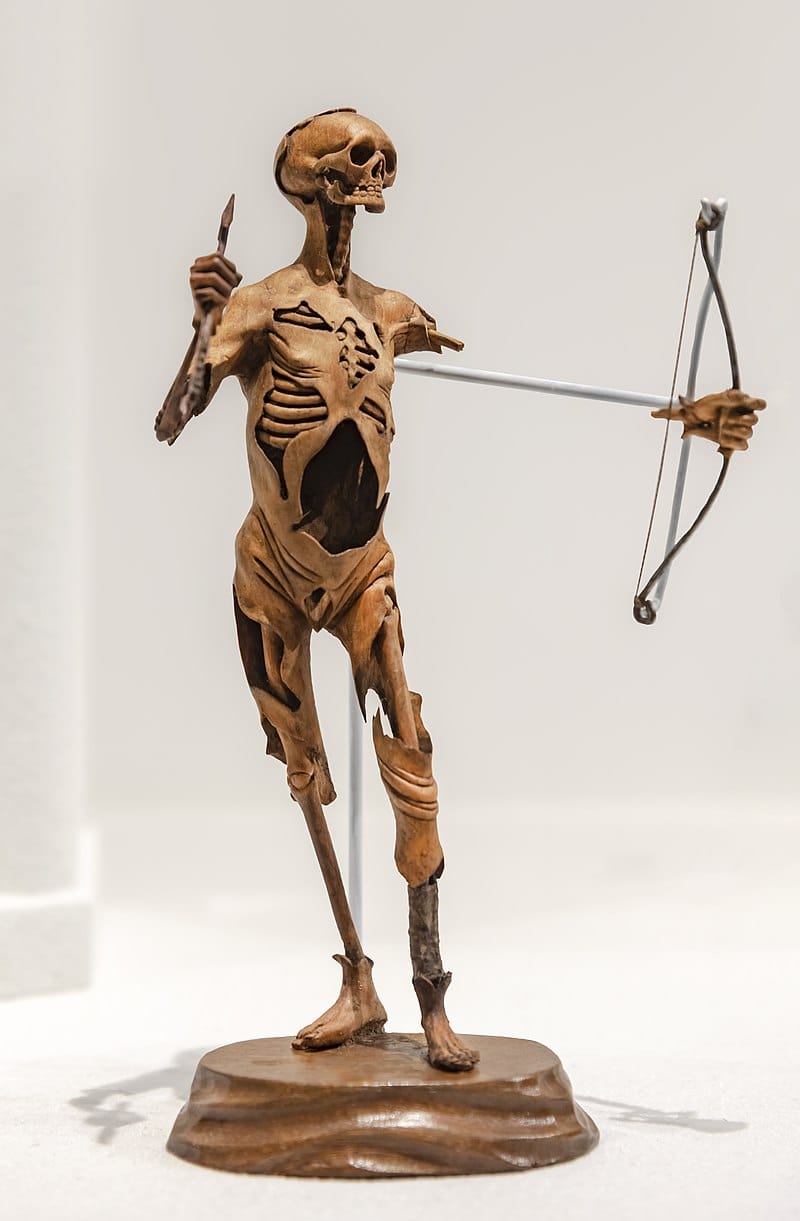
Around the same time, Flemish painter Frans Francken the Younger gives Death a musical talent - playing the fiddle. Here, Death is standing on an hourglass and confronting a miser who has signed a contract with the Devil for great wealth, but who now must pay with his immortal soul.
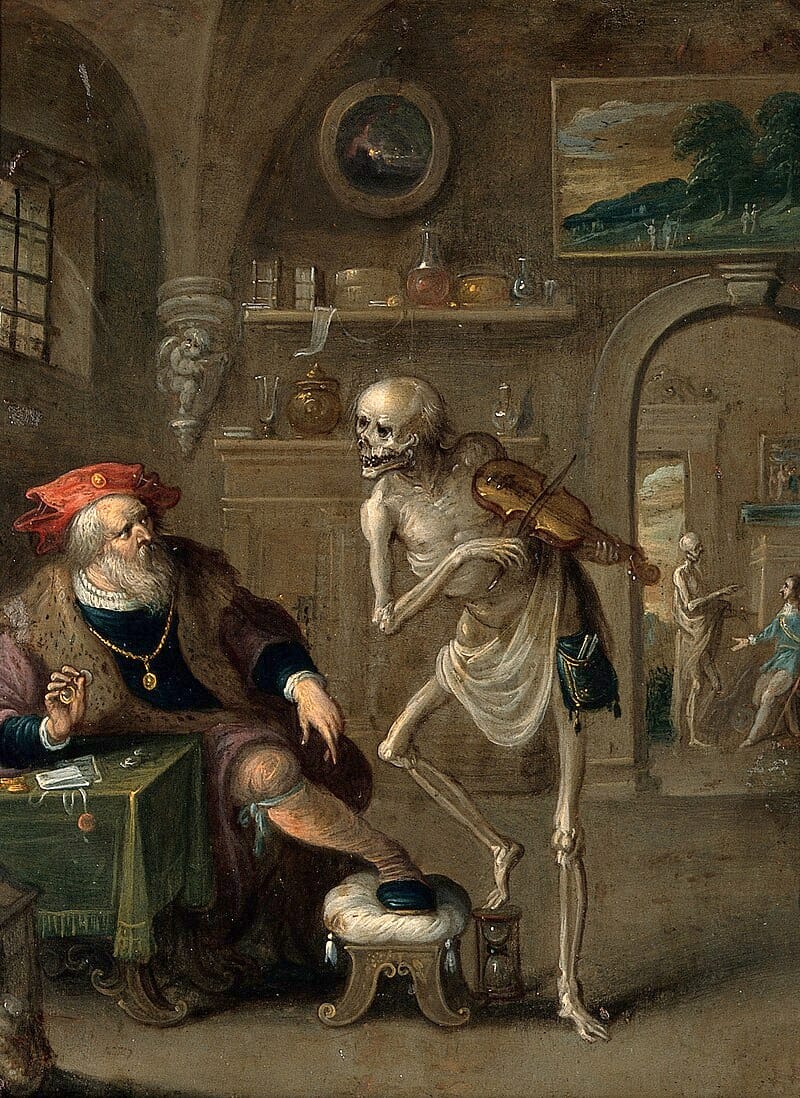
One of the more popular variants of Death as a character, at least since the 14th century, is the Grim Reaper. The image below is from a prayer book, a Book of Hours, possibly by Jean Fouquet circa 1460.

This is Jean-François Millet's Death and the Woodcutter from 1859, a slightly less skeletal figure, complete with hourglass and scythe.
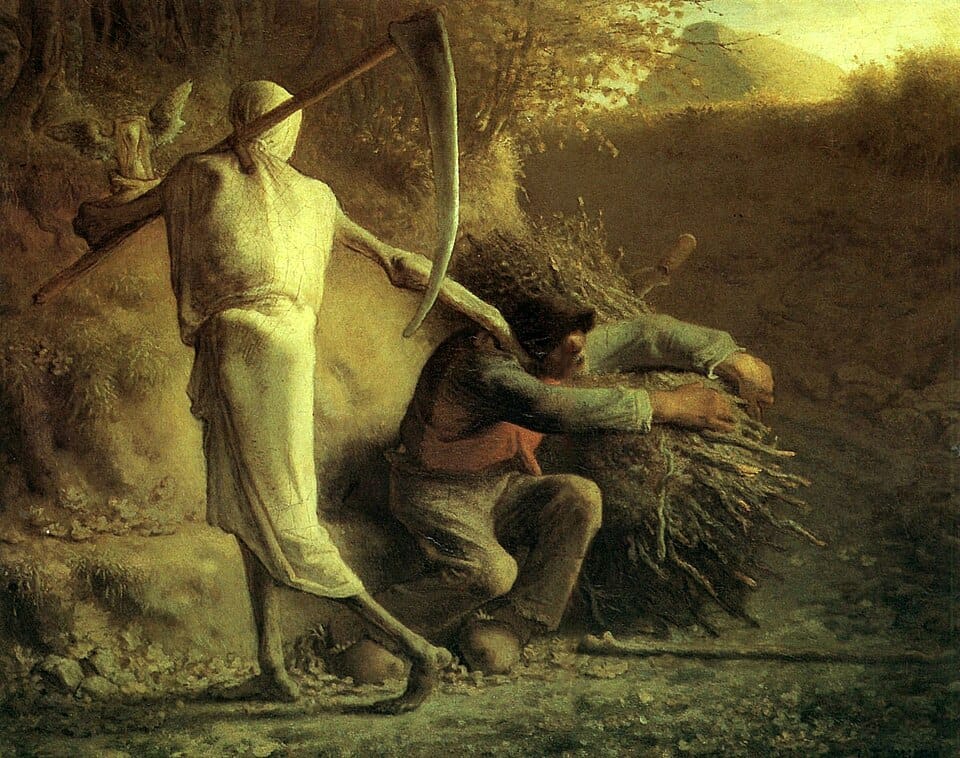
But Death also can be a woman in many mythologies. The image below, Fairy Tale, is by poet, painter and Ukraine's national hero Taras Shevchenko, in 1844. It is just as apropos today, because I have read that in the sub-text, Death is speaking in Ukrainian, while the soldier who is facing his death is speaking in Russian.
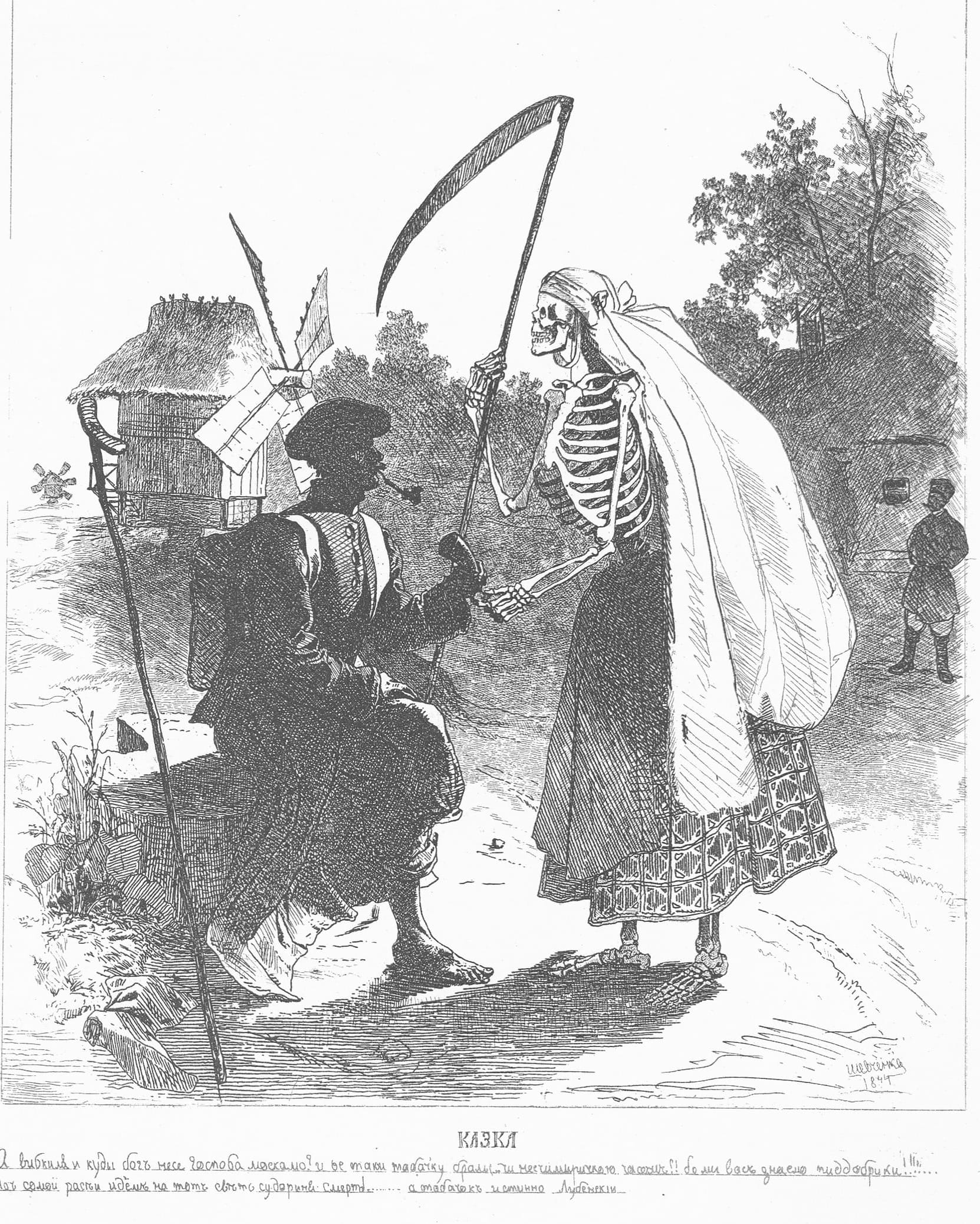
In this image by Latvian painter Janis Rozentāls, she is no skeleton and the effect is almost tender, a very different notion of Death from western Europe.

In Mexico, José Guadalupe Posada used skeletal Death figures extensively, including his wonderfully iconic Calavera de la Catrina ("Skull of the Female Dandy") around 1910.
